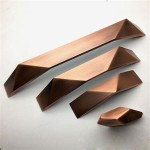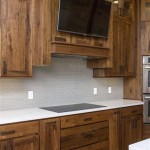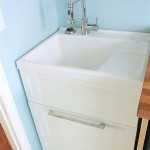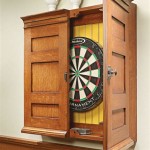How To Get Grease Build Up Off Wood Cabinets In Kitchens and Bathrooms
Grease buildup on wood cabinets is a common problem in both kitchens and bathrooms. In kitchens, cooking oils, fats, and food splatters contribute to the sticky film. In bathrooms, hair products, soaps, and even lotions can create a similar residue, especially on cabinets near sinks and showers. Over time, this accumulated grease attracts dust and dirt, creating a stubborn, unsightly layer that can be difficult to remove. Proper cleaning techniques are essential to preserving the integrity and appearance of the wood finish.
Failure to address grease buildup can lead to several consequences. The sticky layer traps airborne particles, leading to a permanent discoloration of the wood finish. The greasy surface becomes a breeding ground for bacteria and mold, potentially impacting indoor air quality. Furthermore, prolonged exposure to grease can damage the cabinet finish, making it susceptible to cracking, peeling, and warping. Routine cleaning is not merely cosmetic; it is a necessary maintenance task to safeguard the longevity and hygiene of wood cabinets.
Before commencing any cleaning process, it is crucial to identify the type of finish on the wood cabinets. Different finishes require different cleaning approaches to prevent damage. Wipe a small, inconspicuous area of the cabinet with a clean, damp cloth. If the cloth picks up color or the finish becomes dull, the cabinets likely have a less durable finish, such as varnish or shellac. These finishes are sensitive to harsh chemicals and excessive moisture. More durable finishes, such as polyurethane, can withstand more aggressive cleaning methods. When in doubt, always test a cleaning solution in an inconspicuous area before applying it to the entire surface.
Effective grease removal requires the right tools and solutions. A microfiber cloth is ideal for gently lifting grease without scratching the finish. Soft-bristled brushes can be useful for scrubbing stubborn areas, such as corners and grooves. Avoid abrasive scrub pads, which can damage the wood surface. For cleaning solutions, consider options ranging from mild detergents to specialized degreasers, always prioritizing products that are formulated for wood surfaces. Natural cleaning agents, such as vinegar and baking soda, can also be effective, but should be used with caution and diluted appropriately.
Key Point 1: Preparing the Area and Gathering Supplies
Before starting the cleaning process, prepare the area to protect surrounding surfaces. Cover countertops and floors with drop cloths or old towels to catch drips and spills. Remove any items from the cabinets, such as dishes, glassware, or toiletries, to provide unobstructed access to the surfaces. Open windows or turn on the exhaust fan to ensure adequate ventilation, especially when using cleaning solutions with strong odors. Gather all necessary supplies, including microfiber cloths, soft-bristled brushes, cleaning solutions, warm water, and protective gloves. Having everything readily available streamlines the cleaning process and minimizes disruption.
Once the area is prepped, conduct a preliminary dusting of the cabinets. Use a dry microfiber cloth or a vacuum cleaner with a soft brush attachment to remove loose dust, dirt, and debris from the surfaces. This step prevents the dust from mixing with the cleaning solution and creating a muddy residue. Pay particular attention to areas around handles, hinges, and decorative moldings, where dust tends to accumulate. A clean surface allows the cleaning solution to effectively target the grease buildup.
Testing the cleaning solution is a critical step to prevent damage to the wood finish. Select an inconspicuous area, such as the inside of a cabinet door or a corner that is not easily visible. Apply a small amount of the cleaning solution to the selected area and let it sit for a few minutes. Observe the area for any signs of discoloration, softening, or lifting of the finish. If no adverse reaction occurs, proceed with cleaning the rest of the cabinets. If any damage is observed, discontinue use of the cleaning solution and seek an alternative method.
Key Point 2: Step-by-Step Cleaning Process
The cleaning process begins with applying the chosen cleaning solution. Dampen a microfiber cloth with warm water and wring out any excess. Add a small amount of the cleaning solution to the damp cloth. Gently wipe the surface of the cabinet, working in small sections. Avoid applying excessive pressure, which can damage the finish. For stubborn grease buildup, allow the cleaning solution to sit on the surface for a few minutes to loosen the grime.
For areas with particularly heavy grease buildup, a soft-bristled brush can be used to gently scrub the surface. Use circular motions to loosen the grease and dirt. Be careful not to scrub too vigorously, as this can scratch the wood finish. For corners and grooves, use the brush to reach into the crevices and remove accumulated grime. Periodically rinse the brush with warm water to remove any dislodged grease and dirt.
After cleaning, rinse the cabinets with a clean, damp cloth. Use a separate microfiber cloth dampened with warm water to remove any remaining cleaning solution. Wipe the surface thoroughly, ensuring that all traces of the cleaning solution are removed. Leftover cleaning solution can leave a residue that attracts dirt and can damage the finish over time.
Finally, dry the cabinets with a clean, dry microfiber cloth. Wipe the surface thoroughly to remove any remaining moisture. Moisture can damage the wood finish and promote mold growth. Pay particular attention to edges, corners, and seams, where water tends to accumulate. Ensure that the cabinets are completely dry before replacing any items inside them.
Key Point 3: Alternative Cleaning Solutions and Techniques
For those seeking natural cleaning alternatives, vinegar and baking soda offer effective degreasing properties. Dilute white vinegar with water in a 1:1 ratio. Apply the solution to the cabinets with a damp microfiber cloth and let it sit for a few minutes before wiping clean. Vinegar is a natural degreaser and disinfectant, making it an excellent choice for cleaning kitchen cabinets. However, it is important to dilute the vinegar properly to prevent damage to the finish. For baking soda, create a paste by mixing it with water. Apply the paste to stubborn grease stains and gently scrub with a soft-bristled brush. Baking soda is a mild abrasive that can help loosen grease and dirt without scratching the surface. Rinse thoroughly with water and dry with a clean cloth.
Another alternative cleaning solution is dish soap. Choose a mild dish soap that is designed for sensitive skin. Add a few drops of dish soap to a bowl of warm water. Dip a microfiber cloth into the soapy water and wring out any excess. Wipe the cabinets with the damp cloth, working in small sections. The dish soap helps to break down grease and dirt, making it easier to remove. Rinse the cabinets with a clean, damp cloth and dry with a clean, dry cloth.
Steam cleaning offers a chemical-free alternative for removing grease buildup. Use a handheld steam cleaner with a nozzle attachment to direct steam onto the cabinets. The steam loosens the grease and dirt, making it easier to wipe away with a microfiber cloth. Be careful not to hold the steam cleaner too close to the surface, as excessive heat can damage the finish. Steam cleaning is particularly effective for removing grease from hard-to-reach areas, such as corners and grooves.
Maintaining cleanliness is vital after thoroughly cleaning the cabinets. Regularly wiping down the cabinets with a damp microfiber cloth can prevent grease from accumulating. Promptly clean up spills and splatters to prevent them from hardening and becoming difficult to remove. Use exhaust fans or open windows when cooking to minimize grease buildup. Consider applying a protective coating, such as furniture polish or wood sealant, to help repel grease and dirt. Regular maintenance can significantly reduce the need for intensive cleaning and prolong the life of the wood cabinets.
Heavy-duty degreasers should be used with extreme caution, especially on wood cabinets with delicate finishes. These products often contain harsh chemicals that can strip the finish and damage the wood. Always test the degreaser in an inconspicuous area before applying it to the entire surface. Wear gloves and eye protection when using heavy-duty degreasers. Follow the manufacturer's instructions carefully and avoid prolonged exposure to the skin. Rinse the cabinets thoroughly with water after using a heavy-duty degreaser and dry with a clean cloth. Consider consulting a professional cleaning service for assistance with heavily soiled cabinets or when unsure about the best cleaning approach.

How To Quickly Clean Cabinets Remove Grease Gunk Andrea Jean

How To Clean Kitchen Cabinets A Complete Guide For Sparkling Results

How To Clean Your Wood Cabinets Decorate With Tip And More

How To Clean Sticky Wood Kitchen Cabinets Our Top Tips
:max_bytes(150000):strip_icc()/ways-to-clean-wood-kitchen-cabinets-3017289-01-765f893e7cca49a1ab72d7c49efdf518.jpg?strip=all)
Tips For Cleaning Food Grease From Wood Cabinets

How To Clean Wood Kitchen Cabinets Shelfgenie

How To Clean Your Wood Cabinets Decorate With Tip And More

How To Remove Grease From Wooden Kitchen Cabinet Doors Practical Solutions

How To Clean Kitchen Cabinets Everyday Skate

The Ultimate Guide To Cabinet Care Doors N More
Related Posts








